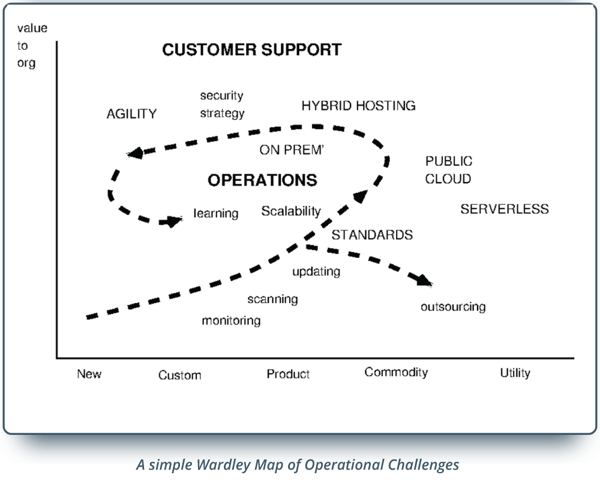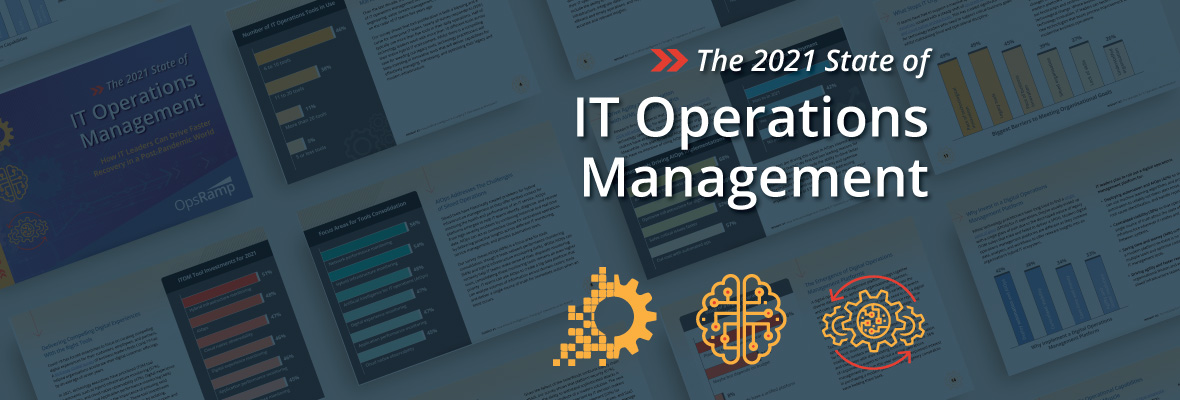It's all changing! So, business as usual!
Working flexibly from home quarantine these past two years has brought a few things into sharper focus. For a start, there's really no such thing as an IT system---there are only Human-IT systems. IT isn't an accessory, it's an integral part of us. Multiple tech cultures are playing a larger role in decision making. Technology decisions are becoming more distributed and more market-driven, from the bottom up rather than exclusively from the top down.
As a technologist in IT infrastructure for the past 30 years, I've witnessed repeated attempts--first to isolate, then reconnect IT to business--fall in and out of fashion as generations of technologies have come and gone. The key driver is not so much capability as people, and an ongoing generational shift from operations focus to developer culture. It's impacting the way technologies are designed and consumed. The digital transformation is a generational shift as much as a technology upgrade.
The digital transformation is a generational shift as much as a technology upgrade."
The enterprise market always has a greater inertia than the small business landscape, but it also has greater resources to make leaps. Platforms are difficult to adopt but are an important accelerator for those leaps. They have a high operational cost and there remain huge areas for improvement in the design, but the experience can be transformative. The risk of vendor lock-in may make technologists suspicious, especially in the wake of the SolarWinds supply chain attacks, but there's no avoiding the gradual commoditization of IT.
Some things never change though. The desire to see and to know as much as possible will always fuel the stable cash-cow of monitoring technologies, where each release adds a lick of paint to a worn out formula, to correlate with the latest buzzwords from Silicon Valley.
Combining carefully curated data with algorithms for automated response, “AI” offers a chance to escape from that cycle if we can get it right. So called “smart platforms” promise to bring some relief to the cognitive overload of throwing data at human operators, as we scale infrastructure in size and speed. But we shouldn't expect these developments to bring net OPEX savings.
Collaboration tools are a popular mainstay of enterprise software, especially as the DevOps and Agile movements steal attention and build grass roots allegiances between developer groups across the industry. Enterprise needs compete with many other distracting industry cultural movements, e.g. those born from Open Source culture and professional development. In a market that strives to build tribes and form communities, the challenge is to keep customer focus and business continuity as professional development takes on a larger fraction of time and resources.
For executives, getting ahead of the many issues means having a broader strategy for managing risk. Risks are many: falling behind, loss of current and future business, loss of identity and brand, loss of license by regulatory compliance, loss of basic agility. Executives are aware of these bullet points, but less aware of how they translate into technology decisions, let alone leadership and organizational practices. We need an increasingly holistic view.
Being quick on our feet, especially in a crisis, is perhaps the most underrated capability. Companies can be left floundering when disaster strikes. Agility comes at a premium. It's another human-tech problem. Cloud was never going to be cheaper than on-premises infrastructure, in terms of running costs, even though the capital cost may be lower. Repatriation from the cloud, and investment in hybrid or ‘edge cloud’ computing are gathering speed as these costs start to bite. The gradual drift towards commoditization is both blessing and curse (see figure). Outsourcing problems is a temptation, but “out of sight, out of mind” isn't what we want for either security or customer services.

As working from home confronts us, security and communication systems that were built on the assumption of being on premises have had to be reconsidered and adapted to a new distributed reality. Ironically, COVID lockdown has shown that enterprise security and continuity can no longer afford to mean hiding inside one's castle and locking down.
As for AI, the lessons from cognitive research underline the ongoing learning relationship as the key investment we are actually trying to make. The number and type of tools may be less important than how frequently they can be used by capable minds. Any technology that someone doesn't interact with on a regular basis is going to be a risk, either because it will lead to vulnerabilities or lack of preparation for when the flood comes.
These are far from being the only challenges on the horizon. As we are confronted by threats of climate change and sustainability, we are going to have to revisit other costs too, like electricity. Remember when you could do nearly everything you do today on a machine with 1000th the CPU rate? The software industry has lost orders of magnitude in efficiency to layers of crippling overhead. That reckoning is on its way too.
Next Steps:
- Register to watch the webinar on the results of OpsRamp’s UK survey: The State of IT Operations Management
- Discover the OpsRamp platform
- Read the Guide to AIOps





